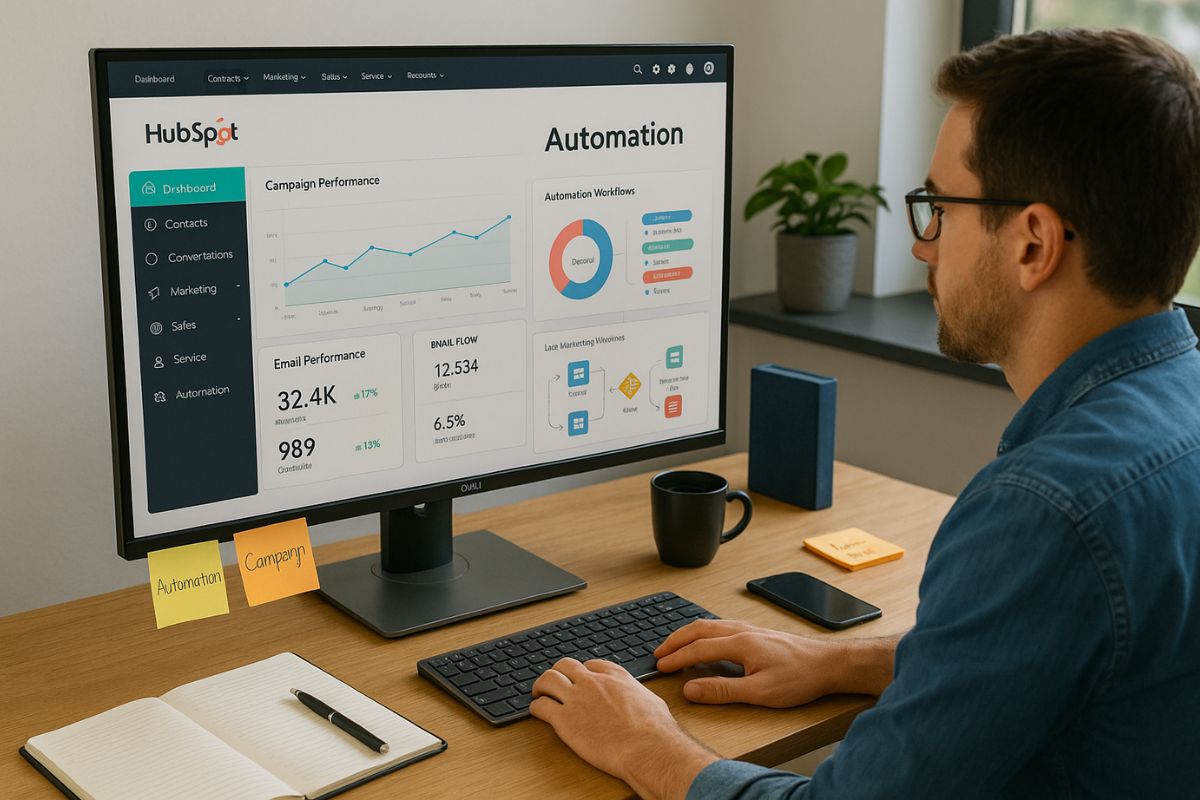Managing digital marketing can take up a lot of time. From sending emails to scheduling posts and tracking analytics, there’s always something that needs attention. For marketers and business owners juggling many tasks, automation tools offer a smart way to stay on track without feeling overwhelmed.
The right tools help save time, reduce human error, and make your work more consistent. Instead of doing the same task again and again, automation lets you set up systems that work in the background. Whether you’re a solo entrepreneur or part of a larger team, using automation tools can help you focus more on strategy and less on repetition.
What This Article Covers About Marketing Automation Tools
This article explores the most effective tools used to automate digital marketing tasks. You’ll learn how they help manage email campaigns, social media, content distribution, and reporting.
Each tool offers something different—from improving team workflow to helping you understand your audience better. The article looks at why automation matters, where it works best, and which platforms are worth exploring based on your marketing goals.
Automating Email Campaigns
Email remains one of the most reliable marketing channels. But sending emails manually to hundreds or thousands of contacts just isn’t realistic. Automation tools make it easy to send welcome messages, follow-ups, or newsletters on a schedule or based on user behavior.
Platforms like Mailchimp, ActiveCampaign, and Brevo help you segment audiences, set triggers for specific actions, and track open rates or click-throughs. You can set up an onboarding sequence once and have it run automatically every time someone signs up.
These tools also help personalize emails based on name, interests, or behavior. That personal touch, even when automated, helps build trust and improve engagement.
Managing Social Media Scheduling
Social media can be a full-time job on its own. Posting consistently, keeping up with trends, and responding to messages takes effort. Automation tools allow you to plan posts ahead of time and spread them across platforms like Facebook, Twitter, LinkedIn, and Instagram.
Tools such as Buffer, Hootsuite, and Later let you create content calendars, upload media in batches, and get insights on engagement. With scheduling in place, you don’t have to stop your day to publish a tweet or photo at the perfect time—it’s already done for you.
Most platforms also offer ways to monitor replies or mentions from a single dashboard. This makes it easier to respond quickly without switching between apps all day.
Streamlining Content Distribution
Creating great content is only part of the job. Getting it in front of the right audience is just as important. Content distribution tools help push blogs, videos, or case studies to multiple channels without manual uploads.
With tools like CoSchedule or HubSpot, you can organize your content plan, connect it to your social and email campaigns, and schedule everything from one place. Some even suggest best times to post or allow content reuse, so you get more value from every piece of work.
These platforms also help ensure your messaging is consistent across channels. Instead of repeating work or posting too much in one place, distribution tools keep your outreach balanced and effective.
Tracking and Reporting Made Easy
Marketing without data is just guessing. Automation tools collect and organize information to help you understand what’s working and what’s not. From website traffic to campaign performance, automated reports save hours of digging through spreadsheets.
Google Analytics provides great insight, but pairing it with platforms like Databox or Zoho Analytics can give you dashboards that are easier to read and share with teams. These tools track KPIs automatically and can be customized to show the metrics that matter most to your business.
Scheduled reporting features mean you’ll get weekly or monthly updates without needing to run reports manually. This helps keep your team aligned and your strategy informed by real numbers.
Supporting Customer Engagement
Responding to customer messages quickly matters. Chatbots and automated replies give businesses a way to answer common questions or start conversations without delay. Platforms like Intercom or Tidio help manage live chats while offering automation where needed.
These tools can qualify leads, offer resources, or direct people to human support when needed. They also log interactions, helping marketing and sales teams better understand customer needs and behavior.
Automating engagement doesn’t mean removing the human touch. It means making sure every visitor gets a response—even when your team isn’t online.
Running Smarter Ad Campaigns
Online ads are most effective when they’re well-targeted and timed right. Ad automation tools help manage budgets, test variations, and adjust campaigns based on real-time data.
Platforms like Google Ads and Meta Ads Manager offer built-in automation features for bidding and optimization. Third-party tools like AdEspresso or Revealbot take this further by offering rule-based automation, A/B testing, and performance alerts.
These tools reduce the need to constantly watch over campaigns, freeing up time to focus on creative direction or strategic planning.
Workflow Automation Across Tools
Sometimes, the best automation comes from connecting the tools you already use. Platforms like Zapier and Make (formerly Integromat) let you build custom workflows between apps. For example, you can set up a rule that sends a Slack message when someone fills out a lead form or automatically adds new email subscribers to a Google Sheet.
These small but powerful connections save time and reduce the chance of something falling through the cracks. When your tools work together, your team works more smoothly.
Automation in digital marketing isn’t about doing less—it’s about doing better. The right tools help you save time, stay organized, and reach your audience more effectively. With everyday tasks handled by smart systems, marketers can spend more time focusing on what really matters: building meaningful connections and growing their impact.
